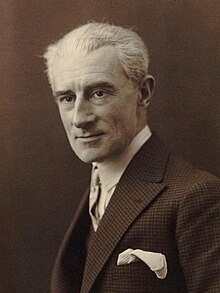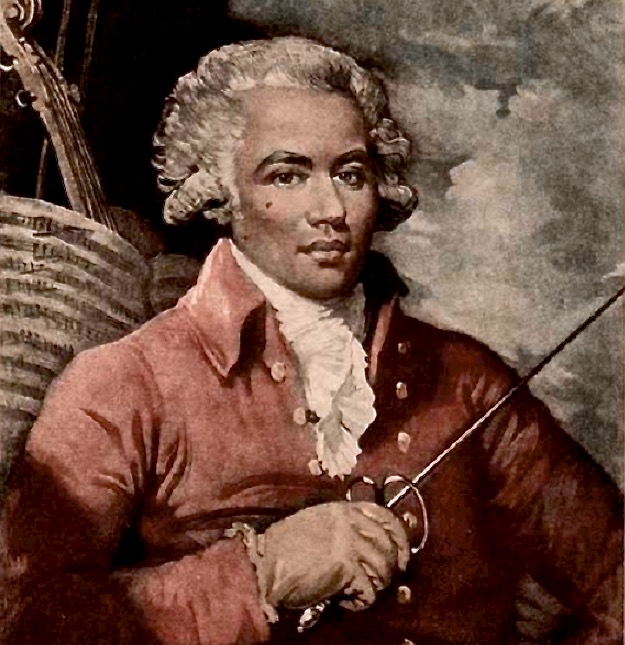
Debarshi Bharmik (Photographer). (2016). Paris Panorama. Retrieved from flickr.com on February 24, 2019. Used under Attribution 2.0 Generic (CC BY 2.0).

|
For the caramel: For the apples: |
For the puff pastry: For the garnish: |
For the caramel: In saucepan, cook sugar over medium-low heat until golden brown, Whisk in butter until smooth and transfer to 9-inch round non-stick pan Let cool.
For the apples: In saucepan, combine butter, sugar and vanilla. Cook over medium heat, stirring to mell sugar. Add apples and cook until apples are golden brown but still firm. Remove from heat, add Calvados and flambe. Drain apples on paper towels and refrigerate until cool. Preheat oven to 325 degrees. Arrange apples in slightly overlapping circular pattern on top of caramel in pan. Bake in oven 45 minutes. Let cool and drain off excess liquid. Refrigerate three hours.
For the puff pastry: Preheat oven to 350 degrees. Roll puff pastry to 1/8-inch thickness. Transfer to parchment-lined sheet pan and top with another sheet parchment. Place five sheet pans on lop and bake 20 minutes. Lower oven temperature to 315 degrees. In saucepan heat corn syrup and whisk in water. Remove sheet pans and top layer of parchment, brush pastry with corn syrup mixture and return to oven. Bake until golden brown, about 10 minutes. Let cool.
To serve: Cut puff pastry into 9-inch circle and place atop apples. Using blow torch, heat bottom of pan to release apples, and invert to unmold. Garnish with cinnamon stick, vanilla bean and star anise and serve.
Citation:
Tarte Tatin: what do we know for sure about tarte Tatin? (2006, Winter). Art Culinaire, (83), 6+. Retrieved from http://go.galegroup.com/ps/i.do?p=AONE&sw=w&u=tel_a_utl&v=2.1&it=r&id=GALE%7CA158528829&asid=102b76ee12675d2d83d860484b5751f8



An online language learning resource that covers over 70 languages. Courses are accessible from a web browser or app.
--------------------------------------------------------------------------------------------------------------------------------------------



French President Immanuel Macron (Left) and Prime Minister Jean Castex (Right)
Image Sources:
By The White House from Washington, DC - #G7Biarritz, Public Domain, https://commons.wikimedia.org/w/index.php?curid=81702700
By Florian DAVID - Own work, CC BY-SA 4.0, https://commons.wikimedia.org/w/index.php?curid=92705433
The French Republic is situated in Western Europe. Following the Second World War, during which France was under German occupation, the Fourth Republic was founded in 1946. As a result of political instability, in 1958 the Fifth Republic was established under the wartime resistance leader Gen. Charles de Gaulle, and the powers of the presidency were strengthened. In 2012 François Hollande of the Parti Socialiste was elected President, succeeding Nicolas Sarkozy of the centre-right Union pour un Mouvement Populaire, who had held office since 2007. In May 2017 Emmanuel Macron, supported by the new centrist movement, En Marche! (which was renamed as La République En Marche shortly after the election), was elected President. Paris is the capital. French is the principal language.
Citations:
http://www.europaworld.com/entry/fr.FLAG
France, in Europa World online. London, Routledge. University of Tennessee, Knoxville. Retrieved 07 November 2017 from http://www.europaworld.com/entry/fr

Yves Klein, French, Nice, France, 1928-1962, Paris, France. Untitled (ANT154). 1961. Artstor, library-artstor-org.proxy.lib.utk.edu/asset/ASFMOMAIG_10312704914

Jules Pascin, American and Bulgarian, active in France, 1885-1930. Father, Mother, and Three Children. c. 1915. Artstor, library-artstor-org.proxy.lib.utk.edu/asset/ABARNESIG_10313042019

Henri Matisse, French, Le Cateau-Cambrésis, France, 1869-1954, Nice, France. La fille aux yeux verts (The Girl with Green Eyes). 1908. Artstor, library-artstor-org.proxy.lib.utk.edu/asset/ASFMOMAIG_10312704333

Mme. Olympe, American, born France, b.1830, (Designer),. Dress, Evening. ca. 1865. Artstor, library-artstor-org.proxy.lib.utk.edu/asset/ABROOKLYNIG_10312351207

Sèvres Porcelain Factory, Sèvres, France, founded 1756, painted by Catherine Godin, active 1797-1800, 1807-1828. Coffeepot. c.1819-20. Artstor, library-artstor-org.proxy.lib.utk.edu/asset/ASLAMIG_10312597942

France, early 17th century. Halberd. c. 1600-1625. Artstor, library-artstor-org.proxy.lib.utk.edu/asset/AMICO_CL_103798487

ANONYMOUS / FRANCE (early XIV century), artist. Keystone. Four facing figures: a winged king (Solomon?) opposite a winged queen ringing a bell, and a winged dragon with a crown (representing wisdom) faces a lion. In the center, four heads facing each other: a bearded man facing a woman, a satyr facing. Early XIV century.. Artstor, library-artstor-org.proxy.lib.utk.edu/asset/IBWA_DB_10332044000051896

France, Limousin, Limoges, 13th century. Plaque from a Book Cover Showing the Crucifixion. 1st half of 1200s. Artstor, library-artstor-org.proxy.lib.utk.edu/asset/AMICO_CL_103799374

More than one million digital images in the arts, architecture, humanities, and sciences. Please note: you must register for a free account in order to download images.

Notre-Dame de Paris is a medieval Catholic cathedral located on the Île de la Cité (Island of the City) in Paris. Originally built in the middle of the thirteenth century, it has stood in Paris as a landmark and pinnacle of Gothic architecture. In April 2019, the roof of the cathedral caught fire likely due to an electrical malfunction amid restoration efforts, causing much of the roof of the sanctuary and the cathedral’s spire to collapse. Miraculously, much of the architecture and works on the inside of the cathedral, such as its pipe organs and 13th century rose windows remained intact, albeit coated with some lead dust due to the fire.
The restoration process for the cathedral has been well underway since the Fall of 2021. French President Emmanuel Macron had set the goal for restoration to be by 2024. As of February 2022, Friends of Notre-Dame de Paris has reported that timber has been selected for the cathedral’s new roof and spire to replace what was originally built in the 1860’s, and that the cathedral’s interior is being cleaned to remove the lead dust. This job requires using tiny brushes to clean and vacuum the dust, centimeter by centimeter, from the cathedral’s 6,000 square meters of surface, just larger than a football field.

By Wandrille de Préville - Own work, CC BY-SA 4.0, https://commons.wikimedia.org/w/index.php?curid=78085901

Marc Chagall was a French modernist painter of the 20th century. Born in the Russian Empire in 1887 (modern day Belarus) to a Jewish family, Chagall is considered one of the greatest Jewish artists of the 20th century. His works span tapestries, ceramics, paintings, illustrations, and even stained glass. Chagall produced windows for multiple cathedrals and institutions, including the Cathedrals in Reims, the Cathedral of Saint Stephen in Metz, the United Nations Art Collection, and the Art Institute of Chicago. While regarded as modernist on a macro level, on a micro level Chagall’s style incorporates Cubism, Symbolism, Fauvism, and in turn Surrealism. While he spent some time in the United States in the 1940’s, much of his life was lived in France where he died in 1985.

Image Source: https://library.artstor.org/#/asset/AMICO_CHICAGO_1031151028
Marc Chagall. 1977. America Windows. Place: The Art Institute of Chicago, A gift of Marc Chagall, the City of Chicago, and the Auxiliary Board of The Art Institute of Chicago, commemorating the American Bicentennial in memory of Mayor Richard J. Daley. https://library.artstor.org/asset/AMICO_CHICAGO_1031151028.

https://library.artstor.org/#/asset/LESSING_ART_10310483276
Marc Chagall. 1917. Wedding. painting. Place: Pushkin Museum of Fine Arts.

https://library.artstor.org/#/asset/AIC_780034
Chagall, Marc, Russian/Ukrainian, 1887-1985. 1911. I and the Village.

Georges Braque was a 20th century French painter. Alongside Pablo Picasso he is one of the leaders of the Cubist movement. Many of their works from the first decade of the 20th century will show a striking resemblance in style. Growing up outside of Paris, Braque was active in his youth both with boxing and with playing the flute. His partnership with Picasso creating Cubist works rose to its peak on the eve of the first world war, until Braque was called off to serve as an infantry sergeant. Following release from military duty, he began to paint with the cubist movement again under the influence of friends such as Juan Gris. Beyond his paintings, Georges Braque is also remembered for his sculptures, prints, and drawings.
Britannica Academic, s.v. "Georges Braque," accessed February 22, 2022,
https://academic.eb.com/levels/collegiate/article/Georges-Braque/16239.

Georges Braque, French, Argenteuil, France, 1882-1963, Paris, France. 1910. Violin and Candlestick. painting. Place: San Francisco Museum of Modern Art, Gift of Rita B. Schreiber in loving memory of her husband, Taft Schreiber.
https://library.artstor.org/asset/ASFMOMAIG_10312704294.

Georges Braque, French, 1882-1963. 1937. Woman with a Mandolin. Painting. Place: The Museum of Modern Art, Mrs. Simon Guggenheim Fund. https://library.artstor.org/asset/AMOMA_10312309834.

Georges Braque. 1955. The Bird and its Nest (L'oiseau et son nid). painting. Place: Musée National d'Art Moderne, Centre Georges Pompidou, Paris, France. https://library.artstor.org/asset/AWSS35953_35953_30941093.